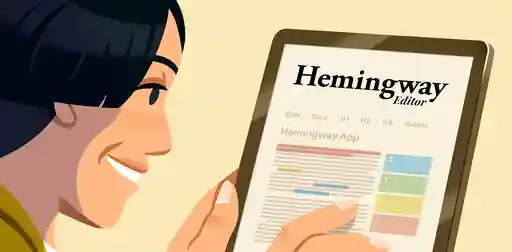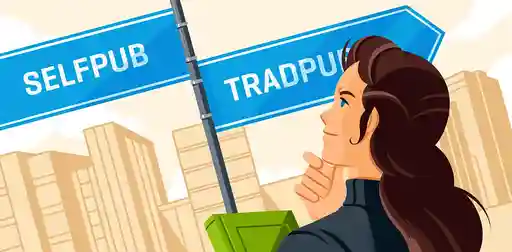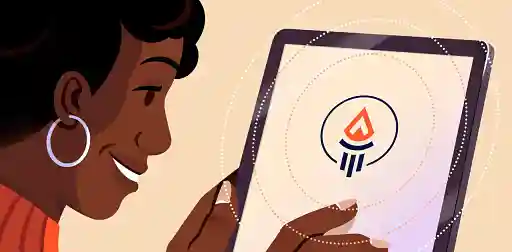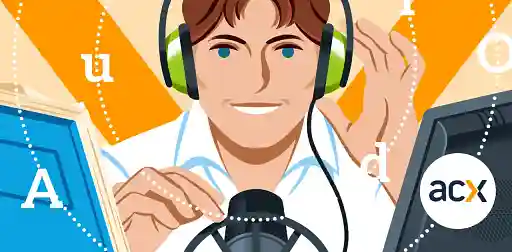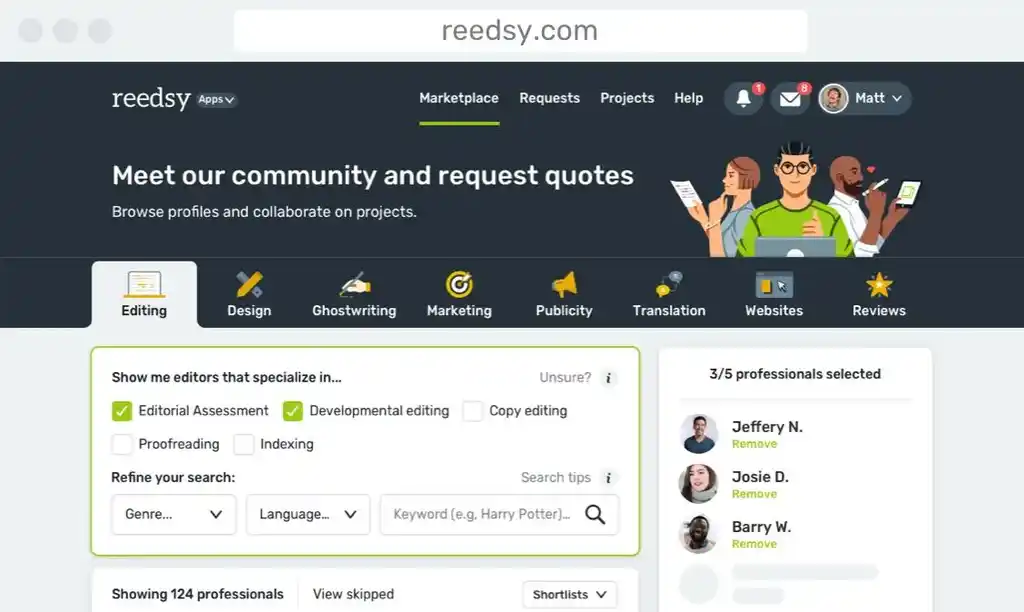Blog • Understanding Publishing
Posted on Aug 15, 2025
The 17 BEST Self-Publishing Companies of 2025
Loretta Bushell
Loretta is a writer at Reedsy who covers all things craft and publishing. A German-to-English translator, she specializes in content about literary translation and making a living as a freelancer.
View profile →Isabella Peralta
A writer and editor, Isabella coordinates "Prompts," Reedsy's weekly short story competition. Originally from the Philippines, she is a graduate of the University of Cambridge.
View profile →There are a lot of companies out there advertising their services to self-publishing authors. Some of them are reputable, but many of them are vanity presses looking to take advantage of aspiring writers.
Before using a self-publishing company, it’s good practice to verify its trustworthiness. If you’re unsure, you can check its service rating on the Alliance of Independent Authors (ALLi) website. Alternatively, you can keep things simple by sticking with a reputable company from the list below!
In this article, we’ll guide you through the 17 best self-publishing companies in the industry to help you determine which are the best for your needs.
Don't forget to grab a free book launch checklist to make sure that you're checking off all of the boxes before the big day!
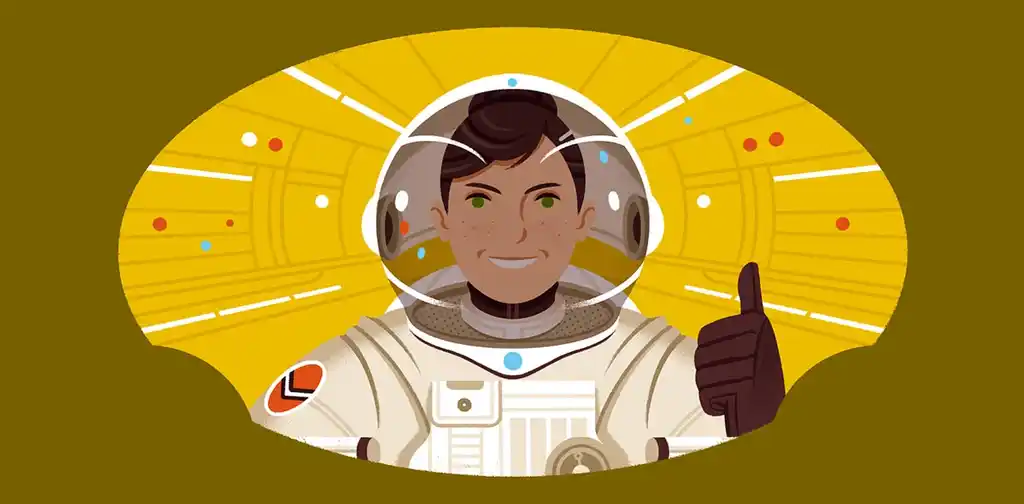
FREE RESOURCE
Reedsy’s Book Launch Checklist
Launch your book successfully with our tried-and-true strategies.
Our top picks
Every self-publishing company has its own strengths and weaknesses. The table below provides a quick overview of the self-publishing companies that Reedsy recommends to most authors.
|
🧰 Company |
🛎️ Service |
✅ Pros |
❌ Cons |
👑 Best for |
|
Amazon KDP |
Direct ebook sales |
Unparalleled reach; marketing tools; free editing |
Hard to stand out; poor customer support |
Reaching a wide global audience |
|
Draft2Digital |
Ebook distribution to multiple retailers |
User-friendly interface; excellent customer support; automated back matter |
No audiobook distribution |
A user-friendly experience |
|
KDP Print |
Print-on-demand services |
Cheap printing costs; fast shipping times; wide reach |
Lower print quality than competitors; limited customization; less likely to be ordered by brick-and-mortar stores |
Reaching a wide global audience on a budget |
|
IngramSpark |
Print-on-demand services |
The go-to for brick-and-mortar stores; high-quality printing |
Poor user interface; slow customer service |
Getting your book into brick-and-mortar stores |
|
Spotify for Authors |
Audiobook distribution |
Helpful marketing insights |
No proven track record; confusing royalty system |
Marketing and sales analytics |
|
Voices by INaudio |
Audiobook distribution |
Wide reach; keep 100% of Spotify royalties |
Limited analytics |
Going wide when you’re already on Spotify for Authors |
|
Reedsy Discovery |
Editorial review |
Credibility boost; large audience; cheaper than competitors |
No performance analytics |
A credible editorial review you can quote to promote your book |
|
Written Word Media |
Book marketing |
More affordable than BookBub; less competitive than BookBub |
Smaller reach than BookBub; requires ongoing management |
A series of accessible promotions that accumulate over time |
|
Reedsy |
Author services |
Free book formatting; top-quality editors and designers to suit different budgets; project and payment protection |
More expensive than Upwork and Fiverr |
Giving your book a professional polish |
Of course, there’s no one-size-fits-all service that will work best for every author. Read on to find out which companies are most suited to your specific needs.
Best ebook retailers
Ebook retailers are online bookstores where you can upload and sell your book directly to customers. While Amazon is the best-known ebook retailer, there are other reputable alternatives depending on your audience and needs. Let’s compare the four main players.
Want to upload your book to multiple retailers at once? Consider using an aggregator.
Amazon Kindle Direct Publishing (KDP)
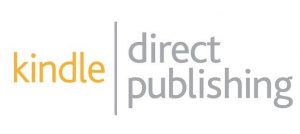
📆 Service offered since: 2007
🌎 Geographic reach: Global
💰 Cost to authors: Free
💸 Royalties: 70% on ebooks priced between $2.99 and $9.99 or 35% outside this range
🌟 ALLi service rating: Excellent (Partner)
👑 Best for: Reaching a wide global audience
Amazon is the world’s biggest book retailer. It accounts for a whopping 68% of global ebook sales. With such a massive potential audience, it’s no surprise that a large majority of self-publishing authors choose to release their books on Amazon KDP. In fact, 87% of respondents to Written Word Media’s 2024 Indie Author Survey named Amazon as their top revenue source.
KDP’s size and popularity don’t come without some disadvantages. It can be hard to gain traction without investing a lot of time and effort into promoting your book, and the platform has notoriously poor customer support.
Q: What are the key elements authors must get right when setting up their book pages on Amazon or other retail platforms?
Suggested answer
I find that the most overlooked component of an Amazon book page is consistently the author bio. Of course the cover design and descriptive text are essential, but so too is the About The Author section. Particularly for non-fiction where the prospective reader is seeking confirmation of why you are credible to write on your subject matter. Readers are looking for subject matter experts, and your thought leadership status is what will sell your book. Beyond that, in the age of AI, you need to show that you are a real person. Over an author's career, it is the author that is the brand, not any one book. Show us that your credentials are legitimate, and that you are a worthy authority on whatever you are writing about.
Chris is available to hire on Reedsy ⏺
I'll base my answer on Amazon, where majority of sales happen for most authors.
Book Cover
I'm aesthetically blind, but I still have a couple of valid criteria - readability and fitting a genre. On Amazon, your book cover is your business card. People need to get what it is about with just a single glance. Don't try to be smart, try to be clear.
In non-fiction, it usually means a huge title that can be read in a thumbnail size. In fiction, it is a big image that screams the right genre (think dragons for fantasy, starships for SF).
Book Title (and subtitle)
In case of fiction, the title may be catchy and cryptic, but it needs to be short. Often, it is just an article and a single word.
In case of non-fiction, you'd better spell out in capital letters what your book is about.
For all books, subtitles are a great place to stuff in some keywords ("a medieval historical novel").
Book Description
Your book description is your sales page on Amazon.
It is not a synopsis, God forbid!
For fiction, think Hollywood movie trailers - something that reveals hints of the movie, but its main objective is to get the attention.
For nonfiction, spell out the features and benefits, but in a way that pique curiosity (“The undervalued habit that everyone can practice and tune into their self-talk (would you believe it can create new brain cells?!)”.
Emphasize your credentials in book's subject matter.
Format your description properly. Have a clear headline - the first short line (think: blog posts titles) that is separated from the rest of the blurb's text. And don't scare a reader with "the big wall of text." This is Internet! Nobody reads huge paragraphs anymore.
Keywords
On Amazon, you have seven fields with 50 characters.
Use five of those to brim. Why? Because the interface doesn't reflect the mechanics of Amazon keyword system. Those "seven fields" are actually a one huge tag cloud. Any word from one field can be connected to any word from another field.
Use one field to give the clear 'elevator pitch' for a book ("military space marines book”).
Use the word 'book' in this field. It will connect with all the other words in your keyword tag cloud.
Use the last field trying to indicate the category your book fits best.
Categories
12 years ago, it was a good idea to hit some niche category, so you could easily claim the bestseller status. Not anymore. Relevancy is the key. If your book is fiction, don't put it in obscure non-fiction categories (and vice versa).
The more specific you can get, the better for your positioning and algorithm's understanding of your book, e.g. Romance ->Historical Romance ->Scottish.
Bonus: Pricing
Don't price your 100-page novella eBook at $9.99.
If you have a fiction series, price the volume #1 lower. It is your lead magnet, if readers like it, they will buy next volumes at higher prices.
Michal is available to hire on Reedsy ⏺
Your book cover is the first thing readers notice, and it has to grab their attention right away. But here’s the thing: your cover gets them to click, but it’s your description that actually convinces them to buy.
A great book description needs to spark curiosity, set clear expectations, and connect with readers emotionally. If it doesn’t make them feel like they need to read your book, they’ll move on to something else.
Other details, like editorial reviews, awards, or even strong reader reviews, can help seal the deal, but the description is where it all happens. Think of your cover as the invitation—it gets readers to the party. Your description? That’s the host that keeps them there and makes sure they have a great time.
Jd is available to hire on Reedsy ⏺
Why do authors continue to publish on KDP? Because for most writers, it’s the place to find readers — unless you have reason to believe your target audience shops elsewhere.
|
Pros of Amazon KDP |
Cons of Amazon KDP |
|
➕ Unparalleled reach |
➖ Hard to stand out in the crowded market |
|
➕ Various marketing and promotional tools |
➖ Lower royalty rates outside the $2.99–$9.99 price range |
|
➕ Edit for free even after publication (as long as the word count doesn’t change by more than 10%) |
➖ Notoriously poor customer support |
KDP Select
Note that Amazon KDP is not the same as Amazon KDP Select. KDP Select is Amazon’s exclusivity program — if you decide to enroll in it, you can only sell your book on Amazon throughout a renewable 90-day participation period. In exchange, Amazon will give you access to countdown deals, free price promotions, and enrollment in Kindle Unlimited. To find out whether KDP Select suits your needs, read our post “KDP Select vs. ‘Going Wide’ — Which Option is Right For You?”
Q: Should authors sell exclusively on Amazon?
Suggested answer
It depends on your ultimate career/business goals. A book that is only published on Amazon looks like a self-published book. For non-fiction, if your goal is the elevation of your thought leadership status, you benefit from your book being "everywhere". Including links to numerous retailers on your website is not a traffic flow exercise, where we are trying to spread out your sales - it is a branding exercise. We want to show the prospective reader, or podcast host, or convention booker that your presence is as far and wide as possible. Widespread distribution increases perceived legitimacy.
Chris is available to hire on Reedsy ⏺
In the children's book world, an author selling their book only on Amazon is not ideal for several reasons. Most advance trade review outlets will only review books that have a broad distribution, or at least are sold also in bookstores or non-traditional book outlets. Also, selling only on Amazon largely cuts out the school and library distribution, which typically use wholesalers. Amazon, in my opinion, is an important part of book sales, naturally, due to its huge marketshare of children's book sales, but best done in conjunction with other sales and marketing opportunities.
Tara is available to hire on Reedsy ⏺
For most authors—especially if you’re just starting out—selling exclusively on Amazon is a smart move. Managing multiple platforms can be overwhelming, and Amazon’s KDP Select program gives you some great tools to build momentum. Page reads from Kindle Unlimited and features like countdown deals make it easier to get your book in front of readers without spreading yourself too thin.
That doesn’t mean you’re stuck with Amazon forever. Once you’ve got some traction—like more reviews, a growing fanbase, or even a backlist—you can start exploring other platforms or even direct sales. But starting with Amazon keeps things simple and helps you focus on what matters most: reaching readers and building your audience.
If you’re new to publishing, Amazon isn’t just a platform—it’s the best foundation to launch your career.
Jd is available to hire on Reedsy ⏺
Apple Books

📆 Service offered since: 2010
🌎 Geographic reach: Global (but restricted to Apple users)
💰 Cost to authors: Free
💸 Royalties: 70% on all ebooks regardless of price point
🌟 ALLi service rating: Recommended
👑 Best for: Reaching younger adults
Apple Books is one of those “elsewheres” with a narrower user demographic. It might have a much smaller share of the ebook market than Amazon, but it’s still the go-to option for many loyal Apple users. Draft2Digital executive Dan Wood notes that “Apple seems to have captured a much younger crowd.”
Q: What are the most common mistakes authors make when self-publishing?
Suggested answer
From my conversations with self-publishing authors, here are some points came up most frequently:
- Cover design - trying to do it yourself if you don't have an understanding of design principles (or skimping by paying someone peanuts). Whether we like it or not, everyone is judging everything and everyone. First impressions count and good (exceptional) design, attracts attention. I myself have been known to purchase books just because of a gorgeous cover (and hoping the story will be as good!).
- Formatting - poor formatting will absolutely degrade all your efforts. Subconsciously, readers shouldn't be drawn to the layout. An exceptional one doesn't stand out (by way of - "There's something "off" with this layout"), and allows the reader to focus on the book content. Excellent formatting reflects an excellent product.
- Marketing - clearly defining who your target audience is, means you have clarity when it comes to creating your marketing content. It helps you market specifically to those most likely to purchase your book/s and develop a loyal following. Writing your book was one part of it. The marketing is as important to get it out into the world and it requires effort and a good understanding of what your specific book needs, so that it can garner the right attention.
- Audience - ignoring your audience and not engaging with them (or hearing their feedback), can be detrimental. They're your main source of importance when it comes to your reach. Truly understanding who they are (as above in marketing - your target audience), is crucial. They will want to engage with you and will reciprocate with loyalty.
- Procrastination and Perfectionism - this is probably one of the greatest issues we face (across humanity to be honest), and it's also a natural part of being human, that we must overcome. Learning how to optimize your time, carving out when you're most productive and sticking to it daily, and tracking when and how often you show up, creates your lifelong "good" habit. We want to weed out the bad habits that stop us from creating the work. Waiting for "the right time" is a fallacy and something that will blindly rob you of precious days, months and sometimes years. Show up for your future self now and develop the habits (over goals), that will compound over time and create the results needed. It's the actual action-taking that gives you clarity. You just need to start and keep going. Know one gets it right in the beginning. Just don't quit on yourself.
- Editing - after your hard work of bringing your book to life, this is an extremely important part of the writing process. We are so close to the work that we can easily miss what is right in front of us. A professional editor can whip you into shape and saving you time, effort and will elevate the quality exponentially.
The way to success is to never give up. Remember why you are doing it and enjoy the process!
Leoni is available to hire on Reedsy ⏺
Something I have seen quite a lot lately in the self-publishing world: trying to do everything by yourself. Thinking that you just need Photoshop to make a cover, spell-checking software to edit, a dictionary and a bit of knowledge to translate. Never underestimate the value of a human professional who has spent years studying and then honing their skills. There is more to translation than substituting one word with another, just as there is more to a cover than a bunch of drawings and a title.
Find the right professional for you and your project, and work closely with them; you won't regret the expense, I promise. Also, yes, some types of stories and tropes are very popular right now, and those seem like a safe bet, as far as marketing and selling go - but likely there are a lot of similar books out already. In traditional publishing, variety is sorely lacking, because a tried and tested product seems safer; let's avoid repeating that mistake. Write the story that's in your heart and then strategically find your niche audience. You'll find them starved for exactly your flavour of creativity.
Mariafelicia is available to hire on Reedsy ⏺
One of the most common mistakes I see with self-published authors is setting unrealistic timelines for their publishing journey. Many writers plan their schedule far too tightly and only reach out to professionals—whether editors, designers, or marketers—at the very last minute.
This creates unnecessary stress on both sides: the author feels rushed and overwhelmed, while the professionals either have to decline the project or take it on under less-than-ideal conditions. In the worst case, authors struggle to even find available professionals because their preferred timeline doesn’t allow for the necessary lead time. Many professionals book out months in advance, so it’s wise to plan at least four months ahead—and in many cases, even that may not be enough time.
It’s also important to remember: as self-publishers, you are free to set your own pace. Unlike in traditional publishing, there is usually no external deadline or audience impatiently waiting for the book—especially when it’s a debut. That pressure often comes only from a self-imposed timeline. Instead of rushing, it’s far wiser to take the time to do everything properly, work with professionals without stress, and then launch the book when it’s truly ready.
Publishing a professional-quality book requires space for collaboration, revisions, and creative breathing room. When timelines are compressed, the process becomes about “getting it done” rather than “getting it right,” which can ultimately compromise the quality of the finished book. A thoughtful, realistic schedule not only reduces stress but also ensures that every stage of the process—from editing to design—has the attention it deserves.
Sabrina is available to hire on Reedsy ⏺
If your target audience is under 40, you might find better results on Apple Books than on Amazon — especially since you can enjoy 70% royalties at all price points. You’ll also face less competition from other authors.
|
Pros of Apple Books |
Cons of Apple Books |
|
➕ Best royalty structure |
➖ Limited to Apple users |
|
➕ Easier to stand out from the competition |
➖ Fewer marketing and promotional tools |
|
➕ Access loyal customer base |
|
|
➕ Audiobook distribution also available |
Get a professional proofread before you publish
Laura J.
Available to hire
Experienced editor with a passion for helping authors fulfill their vision. I edit many genres, including fantasy, romance, sci-fi, and YA.
Rosie G.
Available to hire
Hi! I'm a children's book editor / author with 11 years of experience. I specialise in picture books and novelty books... and I love rhyme!
Victoria B.
Available to hire
I'm a friendly, thorough, supportive Certified Professional Editor who provides copyediting and proofreading services to authors.
Kobo Writing Life
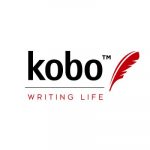
📆 Service offered since: 2012
🌎 Geographic reach: Global (but particularly prevalent in Canada and Europe)
💰 Cost to authors: Free
💸 Royalties: 70% on ebooks priced $2.99 and higher or 45% for ebooks priced below $2.99
🌟 ALLi service rating: Excellent (Partner)
👑 Best for: Excellent promotional tools that don’t require platform exclusivity
Kobo Writing Life is another serious alternative to Amazon KDP. Owned by Canadian company Rakuten Kobo, this self-publishing platform makes ebooks accessible to readers from more than 190 countries. It boasts a particularly strong presence in the Canadian and European markets.
Kobo’s royalty structure is slightly better than Amazon’s. Plus, if you publish on the platform directly (as opposed to via an aggregator), you can access exclusive promotion opportunities and retain the freedom to make your ebook available elsewhere.
In fact, the only real advantage Amazon has over Kobo Writing Life is a higher market share, particularly in the US.
|
Pros of Kobo Writing Life |
Cons of Kobo Writing Life |
|
➕ Good royalty structure |
➖ Lower market share, particularly in the US |
|
➕ Exclusive promotion opportunities when you publish directly on Kobo Writing Life |
|
|
➕ Strong international reach |
|
|
➕ Audiobook distribution also available |
Barnes & Noble (B&N) Press

📆 Service offered since: 2010 (formerly as PubIt!, then Nook Press)
🌎 Geographic reach: Primarily the United States
💰 Cost to authors: Free
💸 Royalties: 70% on all ebooks regardless of price point
🌟 ALLi service rating: N/A
👑 Best for: Fast royalty payments
B&N Press is the self-publishing platform owned by the big-box bookseller Barnes & Noble. Its reach is limited: it’s not very well-known outside the US, and even within the US it has a much smaller share of the market than Amazon.
Q: What are the most effective ways for authors to begin monetizing their writing, particularly in the early stages of their career?
Suggested answer
At the beginning of your writing career, the best way to turn a profit is to be thoughtful and innovative when looking at your work.
Many new writers begin with self-publishing novellas or ebooks, which are inexpensive to produce and can be distributed to readers in rapid order.
Platforms like Smashwords or Kindle Direct Publishing permit the earning of royalties as well as developing a reader base.
Short stories appearing in literary magazines, anthologies, or contest publications also generate income and exposure.
Besides publishing, the majority of authors offer ancillary services—blogging, freelance, or ghostwriting—to generate a reliable flow of income and hone their writing skills.
Achievement in the beginning more likely comes from stability, reader engagement, and smart marketing: building a mailing list, establishing an internet presence, and cooperating with specialty communities relevant to your genre.
Money-making is never instant, but every action generates momentum toward a lucrative writing career.
John is available to hire on Reedsy ⏺
Take advantage of every single opportunity that comes your way in the beginning. Don't be too picky. If the front door is locked, go in the side door. Or find a window. I had great luck with blind queries in the beginning and that was before email, kids. I built many relationships that way, and most of all, keep believing in your talent, be agile, be diligent, and above all LEARN HOW TO SELL YOURSELF.
Bev is available to hire on Reedsy ⏺
If you are a non-fiction author you can use your book as a platform to get speaking engagements even before your book is published. Once it is published, ask the business you are speaking for to purchase books for each of the conference attendees and then include this purchase in your speaking "package."
Melody is available to hire on Reedsy ⏺
If by "best," we mean "fastest," then self-publishing is the way to go, since there're no gatekeepers, meaning no wait time. As soon as your book's done, you can get it up for sale. But if we mean best as in "long-term for your career," that becomes a fuzzier proposition because you need to weight the wait time, rejection, potential rewrites/edits, and possibility of never having something accepted inherent in traditional publishing against the prestige that still comes with making it into that world. It also depends what level of control you want for your work. You obviously get much more with self-publishing, but perhaps you'd benefit from the edit you might get from an editor at a legacy press. Lots of variables here, but my advice is always to be honest with yourself regarding your goals.
Legacy prestige is great and all—and, if it goes well, can be much more lucrative—but there's a lot to be said for having full control of your product.
Brett is available to hire on Reedsy ⏺
On the plus side, B&N Press pays higher royalties than either Amazon KDP or Kobo Writing Life. It also pays these royalties the fastest — 30 days after the end of the month, compared to 45 on Kobo Writing Life and Apple Books, and 60 on KDP.
|
Pros of B&N Press |
Cons of B&N Press |
|
➕ Excellent royalty structure |
➖ Primarily limited to the US market |
|
➕ Get paid faster |
➖ Small market share |
|
➕ Print-on-demand services also available |
Best ebook aggregators
Ebook aggregators save you time and energy by distributing to a bunch of book retailers at once and centralizing sales data. However, the downside is that you’ll have to pay an extra fee for the service. Let’s look at three of the most trusted options.
💸
How much will it cost you to self-publish?
Find out here! Takes 30 seconds.
Draft2Digital (D2D)
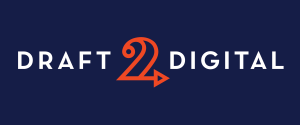
📆 Service offered since: 2012
🌎 Geographic reach: Global
💰 Cost to authors: Free
💸 Royalty share: Draft2Digital takes 10% of the retail price
📇 Distribution: Amazon, Apple Books, Barnes & Noble, Kobo, OverDrive, Everand, Bibliotheca, and hundreds of other stores and libraries
🌟 ALLi service rating: Excellent (Partner)
👑 Best for: A user-friendly experience
If you decide to use an aggregator, Draft2Digital is our go-to recommendation for most authors. They have excellent customer support, a user-friendly dashboard, and a sleek website design. But that’s not all — they also automatically add your newest ebook to the “Also by this author” section of every other ebook you’ve distributed via D2D.
|
Pros of Draft2Digital |
Cons of Draft2Digital |
|
➕ Reach hundreds of stores at once |
➖ No audiobook distribution |
|
➕ User-friendly interface |
|
|
➕ Excellent customer support |
|
|
➕ Automated back matter |
PublishDrive
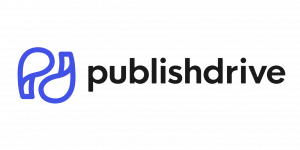
📆 Service offered since: 2015
🌎 Geographic reach: Global
💰 Cost to authors: Free for 1 book with 29 distribution channels; from $13.99 per month for multiple books, more distribution channels, and promotional tools
💸 Royalty share: Keep 100% of your royalties
📇 Distribution: Amazon, Apple Books, Google Play, Barnes & Noble, Kobo, Everand, Bookmate, and hundreds more
🌟 ALLi service rating: Excellent (Partner)
👑 Best for: Authors who expect to make a lot of sales
Like Draft2Digital, PublishDrive has a modern interface and regular sales reports to keep you up-to-date on your profits. It distributes to over 400 stores and 240,000 libraries — including non-Western retailers like the popular Chinese e-commerce platform DangDang.
Q: What are the most common mistakes authors make when pricing their self-published books, and how can they avoid them?
Suggested answer
A big mistake I see authors make is not thinking through how their pricing affects readers. If you price your book too high, you risk scaring people off. If it’s priced too low, readers might assume it’s not worth their time. Finding the right balance—what I like to call the “sweet spot”—is so important.
The best place to start is by looking at other books in your genre. What are they priced at? This gives you a good idea of what readers are willing to pay. Temporary promotions, like dropping your price to $0.99, can help boost visibility, but I don’t recommend staying there. It’s easy to get caught in a “race to the bottom,” where constant discounts make your book feel less valuable.
As your book gains credibility—through reviews, awards, or just word of mouth—you can raise your price to reflect that value. Pricing isn’t just about numbers; it’s about showing readers that your book is worth their time and money.
Jd is available to hire on Reedsy ⏺
The most common mistake authors make when pricing their self-publishing books is not pricing it so that they are covering all of their outlaid costs. Some authors only look at comparative titles in the marketplace and how they are priced. Indeed, this is an important step in figuring out what to price a book, but if you are not making a return on investment to at least to recoup your spend, not to mention a profit, then your list price is failing you.
Tara is available to hire on Reedsy ⏺
My answer, as usual, is based solely on Amazon, where 80-100% of sales happen for most authors.
1. Missing KDP's thresholds for Kindle
Amazon pays you 70% of the retail Kindle price - if the price is in the range $2.99 - $9.99.
If the price is lower than $2.99 or $10 and higher - you will receive only 35% in royalties.
Kindle book which is more expensive than $10 and below $29 has no economic justification from the self-publishing point of view.
2. The same price for the paperback and Kindle
Those are two distinct products. Kindle should be cheaper than paperback. There are no production or distribution costs involved for an eBook.
Plus, Amazon customers are trained to expect cheap and discounted stuff, especially for such a flagship category like Kindle books.
3. Pricing too low
This happens more with hard copies. In 2025, Amazon introduced new royalty structure: 50% royalties for books cheaper than $9.99, and 60% for $9.99+ books.
The trick is in fine print, as usual. Those percentages are counted after deducting the printing (and distribution) fee. So, when the same book costs $8 or $12, your royalties will be dramatically different. Let's say the printing cost is $3: in the $8 scenario you will get half of the five dollars; in the $12 scenario, you will receive 60% of nine dollars ($2.5 vs. $6).
Avoid the less-than-$9.99 price range, unless you have particularly good reason to price your book so low.
With Kindle there is a dramatic difference between $2.99 book and $2.49 book because of the thresholds mentioned in point #1 (about $2 vs. 87 cents).
Personally, I find only one price point below $2.99 worth trying: 99 cents. It is good for entry point of a series or for promotional purposes.
4. Pricing too high
It applies especially to Kindle format. First, because the royalties’ thresholds penalize higher prices. Second, because Kindle readers are cheap.
First-time authors think: "It's just $5, a price of the coffee, surely people will be willing to buy my book." They forget that they don't sell coffee, but eBooks. Amazon customers have millions of other titles free or priced incredibly low to choose from.
In case of paperbacks, it is more about the subject matter and length of the book. If you try to sell your 70-page novella for $20, good luck. Non-fiction books solving specific problems are more "justified" to cost more.
In the fiction genres the competition is fiercer. Readers have plenty of alternatives, so if you overdo your price, they may skip your book and pick your competitor’s book.
5. Pricing out of market
If you aren't a household name, you'd better accommodate to market's expectations. Don't price your debut novel, or poetry book, or children book $50 - it is just too expensive.
Don't price your business manual $0.99 - people will think it's so cheap because it's trash.
Michal is available to hire on Reedsy ⏺
What really sets PublishDrive apart, however, is its subscription-based service. You get to keep 100% of your royalties and instead pay a flat monthly rate. If you anticipate a substantial number of sales, this model will save you money in the long run (and it’s free for your first book if you don’t care about detailed sales reports and promotional tools).
|
Pros of PublishDrive |
Cons of PublishDrive |
|
➕ Reach non-Western markets |
➖ Flat rate can be more expensive if you don’t sell many copies |
|
➕ Keep 100% of your royalties |
➖ No promotional tools on the free plan |
|
➕ User-friendly interface |
|
|
➕ Audiobook distribution also available |
StreetLib

📆 Service offered since: 2006
🌎 Geographic reach: Global
💰 Cost to authors: Free for Basic plan or $99 per year for Pro plan
💸 Royalty share: Keep 70% of net revenue on the Basic plan or 85% on the Pro plan
📇 Distribution: Amazon, Apple Books, Google Play, Barnes & Noble, Kobo, Everand, OverDrive, and tens of other retailers and libraries
🌟 ALLi service rating: Recommended
👑 Best for: Publishing in languages other than English
StreetLib has even more of an international focus than PublishDrive. Not only does it distribute ebooks across the globe, but it also offers author portals in several languages and regions, including South Asia, the Middle East, and Africa. If you plan to stick to the US and Europe, it’s got your back there as well.
The downside of StreetLib is that it takes a higher percentage of your earnings than Draft2Digital or PublishDrive.
|
Pros of StreetLib |
Cons of StreetLib |
|
➕ Reach non-Western markets |
➖ Lower royalty earnings |
|
➕ Upload from 6 continents |
|
|
➕ Choice of plans |
|
|
➕ Audiobook distribution also available |
Best print-on-demand (POD) services
While plenty of self-publishing authors rely on the ebook market for most of their sales, lots of readers still prefer getting their hands on a beautifully designed paperback. POD services allow almost any indie author to put a paperback up for sale without breaking the bank, since each book is only printed after an order has been placed.
If that piqued your curiosity, here’s a quick look at some of the major players in POD. (And for a deep dive, read our post where we personally tested and compared the five best POD services out there.)
KDP Print

📆 Service offered since: 2016 (formerly as CreateSpace)
🌎 Geographic reach: Global
💰 Cost to authors: Varies depending on your book’s specs, but generally budget friendly
💸 Royalties: 50% on print books priced up to $9.98 or 60% on books priced at $9.99 or higher
📇 Distribution: Amazon and other retailers through Expanded Distribution
🌟 ALLi service rating: Excellent (Partner)
👑 Best for: Reaching a wide global audience on a budget
We recommend Amazon’s POD service for most authors. KDP Print has the cheapest per-unit printing costs, ships the fastest, and reaches not just the gigantic Amazon customer base, but also shops and libraries across the globe via the Expanded Distribution option.
Q: What are the crucial steps to successfully publishing a book on Amazon, from manuscript preparation to marketing?
Suggested answer
Publishing a book on Amazon comes down to two key components: a high-quality book and reaching the right readers. Think of it as creating a polished final product and ensuring the right audience sees it.
Your book cover is your first impression—it should clearly convey the genre and instantly appeal to your target readers. Next, your description should emotionally connect with potential buyers, drawing them into the story and making them want to hit "Buy." Adding credibility factors like Amazon reviews, editorial reviews, or awards can help reinforce their decision.
Pricing is another important step. It needs to align with what readers expect in your genre while leaving room to adjust as your book gains traction. Finally, traffic: you’ll need a plan to bring readers to your book’s page through advertising, promotions, or organic efforts like email lists.
Each of these elements works together to create the best possible experience for your readers and give your book its greatest chance at success. I work with my clients to ensure all these pieces are aligned and optimized, giving their books the boost they need to stand out on Amazon.
Jd is available to hire on Reedsy ⏺
That said, there are two main downsides to KDP Print: it has fewer customization options than competitors, and the print quality is not quite as high. So, if your book has an unusual spec or includes lots of charts and images, it’s probably not the best option for you.
|
Pros of KDP Print |
Cons of KDP Print |
|
➕ Cheapest printing costs |
➖ Lower print quality |
|
➕ Fastest shipping times |
➖ Fewer customization options |
|
➕ Reach a huge global audience |
➖ Not the number one choice of brick-and-mortar stores and libraries |
|
➕ Distribute to external stores and libraries |
|
|
➕ Same platform as your KDP ebooks |
IngramSpark

📆 Service offered since: 2013
🌎 Geographic reach: Global
💰 Cost to authors: Varies depending on your book’s specs, but generally mid-range
💸 Royalty share: Varies depending on print costs and wholesale discount
📇 Distribution: Amazon, Barnes & Noble, Indigo, Foyles, Waterstones, and thousands of other retailers, libraries, and institutions
🌟 ALLi service rating: Excellent (Partner)
👑 Best for: Getting your book into brick-and-mortar stores
If your focus is on getting your book into brick-and-mortar stores, you’re probably best off using IngramSpark. This subsidiary of Ingram Content Group bridges the gap between self-publishing and traditional publishing by making indie books available through the same channels major publishers use.
Not only does IngramSpark distribute to more retailers than KDP Print, but it also produces books of a higher quality, and it has a better reputation than Amazon among retailers.
The number one drawback of IngramSpark is its user interface, which can be clunky and difficult to navigate. Still, if you choose IngramSpark for your POD services, you might want to distribute your ebook via the platform as well for simplicity’s sake. We wouldn’t recommend it as an ebook distributor on its own, though, as other aggregators are more profitable and easier to use.
|
Pros of IngramSpark |
Cons of IngramSpark |
|
➕ Reach the most brick-and-mortar stores |
➖ Poor user interface |
|
➕ High-quality printing |
➖ Slow customer service |
A word of warning
IngramSpark doesn’t guarantee that stores will actually stock your book. They have the option to order it in, but you’ll still have to persuade them to do so. To increase your chances of getting stocked, make sure your wholesale discount is 55% and your book is refundable. You can also speak to nearby stores and libraries, who are often happy to feature local authors.
Blurb
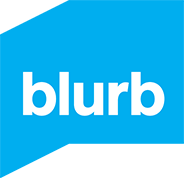
📆 Service offered since: 2005
🌎 Geographic reach: Global
💰 Cost to authors: Varies depending on your book’s specs, but generally very high
💸 Royalty share: Keep 100% of the royalties (Blurb’s share is built into the cost of the book)
📇 Distribution: Amazon, the Blurb bookstore, and over 39,000 other stores via Ingram
🌟 ALLi service rating: Recommended
👑 Best for: High-quality image printing
Blurb produces excellent quality books — but its printing costs are prohibitively expensive. Even though you get to keep 100% of the royalties, this POD service is usually only worth it for works with significant visual components, such as children’s books, or books with uncommon formatting requirements. In other words, choose Blurb if you refuse to compromise on printing quality.
|
Pros of Blurb |
Cons of Blurb |
|
➕ Exceptional printing quality |
➖ Very expensive |
|
➕ Wide range of specialty formats available |
|
|
➕ Reach thousands of stores or sell directly |
|
|
➕ Keep 100% of the royalties |
Best audiobook distributors
Why limit yourself to ebooks and paperbacks? The Audio Publishers Association 2025 Consumer Survey found that 51% of Americans aged 18 and older have listened to an audiobook — that’s 134 million potential consumers in the US alone.
Q: What are some effective ways an author can supplement their income outside of book sales?
Suggested answer
If someone tells me that they are set on making their return on investment for a book project off their book sales, I do not work with them. They are delusional. It is almost impossible to make any money - much less pay back the amount of time and energy you invest in a ghostwriter or other collaborators - through book sales alone.
Instead, authors need to think of the book as a leverage point for other business opportunities. You can use the book to secure high profile (and paid) speaking engagements, to connect with new clients, or to general raise the profile of your brand. What you want to achieve with the book depends on your goals, and a premium ghostwriter or collaborator will help you not only produce a great product, but also help you think through how to leverage that stand-out book to get the highest ROI possible.
This is a great resource to learn more about the ROI of a book: https://authorroi.com/
Jeff is available to hire on Reedsy ⏺
For most authors, income from book sales should never be regarded as the mainstay of their earnings.
Royalties are modest at best and tend to arrive infrequently.
On a book that retails at £19.99, the average royalty for a traditionally published author is around 7.5 percent, which works out at roughly £1.50 per copy sold.
That’s before you consider that many publishers calculate royalties not on the cover price but on what they actually receive from retailers, which reduces the amount further.
Payments are often made only once or twice a year and, if you’ve been given an advance, you won’t see a penny in royalties until that advance has been earnt on sales.
All of this means that unless you’re selling in the tens of thousands, book royalties are not a reliable or regular source of income. Instead, most working writers sustain themselves by making use of their skills across a wide range of outlets. Blogging, feature writing, journalism and copywriting all offer more predictable fees, whether paid per article or on a retainer basis. Editing and proofreading services can provide steady work too, paid per project, per word, or by the hour, while ghostwriting, though variable, can be highly lucrative when the projects come in.
Teaching is another avenue. Writers often run workshops, lead community groups, or teach courses at schools, universities or online, all of which provide session fees that are far more consistent than royalties.
More modern approaches include producing digital content such as podcasts, online courses, or subscription newsletters via platforms like Substack or Patreon, which allow writers to build a community of supporters and enjoy regular income.
Even library lending can add a little extra through the UK’s Public Lending Right scheme, which pays authors each time their books are borrowed.
In the end, the crucial point is that being a writer opens the door to an enormous range of possibilities beyond the narrow lane of book royalties. You may have written a novel, but your skills can just as easily be applied to commercial copy, specialist features, editorial support, or teaching. Diversifying in this way not only brings in the stability you need to keep writing but also broadens your craft and strengthens your voice.
And yet, despite all this, books remain the heart of why most of us write. A novel or memoir may never pay the bills on its own, but it is where the art and joy of creativity truly lie. Approaching book writing as a passion first, rather than as a financial lifeline, allows you to create with freedom and authenticity.
The income you make elsewhere keeps you afloat, but the books you write remain the truest expression of your voice and imagination-and play a vital part in developing you as a writer until you reach a place where a book may make all the difference.
I wish you every joy and success.
Edward is available to hire on Reedsy ⏺
You can self-publish your audiobook alongside your ebook on Apple Books, Kobo Writing Life, PublishDrive, and StreetLib. However, there are also specialized audiobook distributors that you might want to consider, especially if none of these are your first choice for ebook distribution.
ALLi downgraded its service rating for Amazon’s audiobook distribution service, ACX, to “Caution” because of harmful policies, so we will not include the site here. Instead, let’s look at one direct retailer and two aggregators, each of which has its own perks.
Spotify for Authors
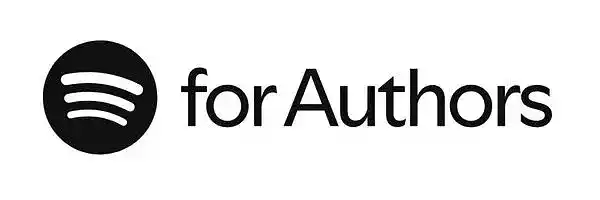
📆 Service offered since: 2024
🌎 Geographic reach: Global
💰 Cost to authors: Free
💸 Royalties: Not transparent
📇 Distribution: Spotify
🌟 ALLi service rating: Not yet rated
👑 Best for: Marketing and sales analytics
While Amazon’s Audible still dominates the audiobook scene with a 63.4% share of the US market, Spotify’s popularity is growing rapidly — they’ve seen a 35% rise in audiobook listening hours between January 2024 and January 2025.
If you want to jump on the bandwagon and maximize your success among Spotify’s 696 million users, then you should make an account with Spotify for Authors. Besides earning higher royalties by publishing directly, the main advantage of this platform is their detailed analytics. You can see your listeners’ age, gender, and favorite podcast categories, meaning you can figure out who your audience is and how best to market to them.
|
Pros of Spotify for Authors |
Cons of Spotify for Authors |
|
➕ Gain valuable demographic and behavioral insights on your listeners |
➖ Royalty system is not very transparent (but this applies to Spotify royalties earned through aggregators too) |
|
➕ Earn more revenue by cutting out the aggregator |
➖ New platform with no proven track record |
Voices by INaudio

📆 Service offered since: 2016 (formerly as Findaway Voices)
🌎 Geographic reach: Global
💰 Cost to authors: Free
💸 Royalty share: 80% of net revenue
📇 Distribution: Spotify, Audible, Apple Books, bibliotheca, and tens of other retailers
🌟 ALLi service rating: Excellent (Partner)
👑 Best for: Writers already on Spotify for Authors
Since a large number of people don’t listen to their audiobooks on Spotify, we recommend also choosing an aggregator to distribute to all the other major audiobook retailers. The easiest option if you’re on Spotify for Authors is to link your account with their partner Voices by INaudio (and you’ll still get to keep 100% of your Spotify royalties). With competitive payment terms and global reach, it’s a hassle-free way to cast a wide net with your audiobook.
|
Pros of Voices by INaudio |
Cons of Voices by INaudio |
|
➕ Competitive royalty rates |
➖ Limited analytics |
|
➕ Reach all major retailers at once |
|
|
➕ Keep 100% of Spotify royalties |
Author’s Republic

📆 Service offered since: 2015
🌎 Geographic reach: Global
💰 Cost to authors: Free to distribute
💸 Royalties: 80% of net revenue
📇 Distribution: Audible, Amazon, Google Play, Spotify, and tens of other retail, streaming, and library partners
🌟 ALLi service rating: Excellent (Partner)
👑 Best for: Creating and distributing your audiobook in one place
Another option for audiobook distribution is Author’s Republic. Although you’ll have to give up some of your Spotify royalties, this aggregator has one major advantage over Voices: you can create your audiobook on their site before you publish it. For authors who don’t know much about how to make an audiobook, this is an extremely convenient extra.
But be warned: whether you create your audiobook on their platform or simply upload it, Author’s Republic limits each chapter to 78 minutes in length — compared to 120 minutes on Voices by INaudio.
|
Pros of Author’s Republic |
Cons of Author’s Republic |
|
➕ Can also create the audiobook on their site for a fee (ranging from $50–$400+ per finished hour) |
➖ Limited analytics |
|
➕ Competitive royalty rates |
➖ Shorter maximum chapter length |
|
➕ Reach all major retailers at once |
Best marketing services
Getting your book published in your desired format(s) is only half the battle, of course. You may have created a wonderful book and distributed it to your preferred retailer platforms — but you still need to find a way to make people buy it.
While most of the above companies offer some limited marketing tools, you’ll often get better results from a dedicated service. Thankfully, there are a few companies you can turn to for assistance.
Q: What aspects of book marketing should authors focus on learning and handling themselves to save money while promoting their work?
Suggested answer
Marketing a children’s book doesn’t have to require a huge budget. Being selective with where you are focusing your efforts, time, and budget will help maximize your return on investment. This can be getting testimonials from an author's own network, mazimizing your discoverability on Amazon through precise categories and keywords, and targeting special interest group for endorsements or bulk buys. For instance, if a picture book is about aviation, contacting aviation museums, organizations, and stores would be a great start. For kids books, reaching educators and librarians is important for word of mouth and for in-person event opportunities. Positive feedback from a teacher or librarians gives a book credibility and validation and lets families know this book is vetted, so to speak, and worth purchasing.
Tara is available to hire on Reedsy ⏺
Reedsy Discovery
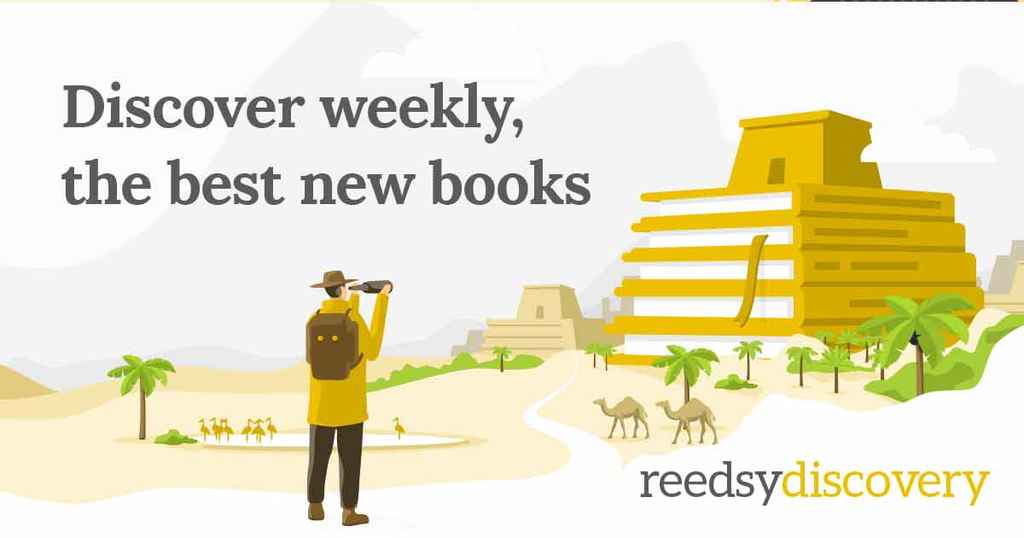
📆 Service offered since: 2019
🖋️ Service(s): Editorial review
💰 Cost to authors: $50
🌟 ALLi service rating: Excellent (Partner)
👑 Best for: A credible editorial review you can quote to promote your book
Reedsy Discovery helps thousands of self-publishing authors get the boost they need every month. When you submit your book, you get an editorial review in time for your launch date — as well as a chance to be featured in our weekly newsletter, sent out to over 200,000 eager readers.
In addition, Reedsy’s marketplace has dozens of experienced book marketers who can help you optimize your book’s product page, plan an ad campaign, and perfect your email marketing strategy.
|
Pros of Reedsy Discovery |
Cons of Reedsy Discovery |
|
➕ Editorial review lends credibility to your book in your own marketing efforts |
➖ No sales tracking or performance analytics |
|
➕ Access a large audience of readers |
|
|
➕ Cheaper than other editorial review sites |
BookBub
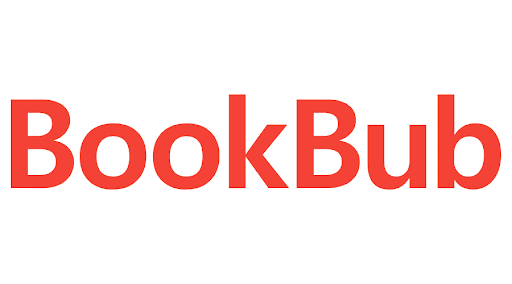
📆 Service offered since: 2012
🖋️ Service(s): Promotion services including featured deals and self-serve ads
💰 Cost to authors: Varies by genre and service, but generally expensive
🌟 ALLi service rating: Recommended
👑 Best for: Authors willing to pay significant upfront costs in return for readers
Perhaps the single biggest promotional platform in publishing, BookBub offers self-publishing authors a powerful way to publicize their discount deals. Readers receive a targeted newsletter every day with discounted books in their preferred genres.
As you can imagine, every author wants to make it onto these newsletters — so it can be very expensive to get a featured deal: hundreds to thousands of dollars depending on the book’s price and genre. Even if you’re willing to spend this money, it can be difficult to secure a deal, since you’ll need to be able to compete with other authors in terms of quality, reviews, price, and availability. But if you do get featured, you’ll likely see a significant sales spike.
BookBub also offers less competitive ads, as well as a space for readers to review your book and recommend it to others in the community.
|
Pros of BookBub |
Cons of BookBub |
|
➕ Get community reviews |
➖ Very expensive |
|
➕ Access a very large audience of readers |
➖ Highly competitive |
|
➕ Strong conversion from featured deals |
|
|
➕ Targeted marketing |
|
|
➕ Prestigious reputation |
Written Word Media
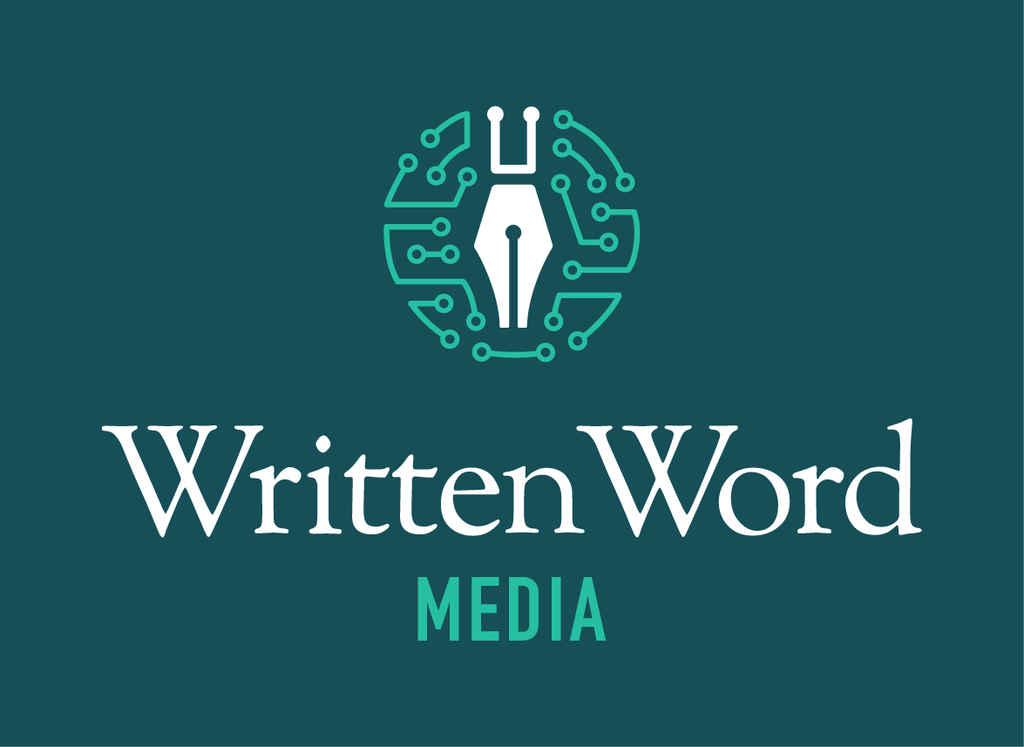
📆 Service offered since: 2014
🖋️ Service(s): Promotion services including email promotions and social media ads
💰 Cost to authors: Varies by genre and service, but mid-range
🌟 ALLi service rating: Excellent (Partner)
👑 Best for: Smaller, less prestigious promotions that accumulate over time
Written Word Media is the solution to BookBub’s exclusivity problem. It decreases the barriers to entry with several cheaper, smaller-scale promotion opportunities that also target specific reading interests.
While each individual campaign may not generate a huge sales spike like on BookBub, the cumulative effect of multiple promotions can produce long-term results.
|
Pros of Written Word Media |
Cons of Written Word Media |
|
➕ More affordable promotion opportunities |
➖ Smaller audience reach |
|
➕ Not as competitive as BookBub |
➖ Requires ongoing management |
|
➕ Targeted marketing |
You can find more marketing services over on Reedsy’s directory of book promotion sites.
Best author services
All that being said, your book isn’t likely to gain traction if it’s not written to a high standard and presented professionally. If you’re still concerned with the editing, design, and formatting of your book, then perhaps the companies above don’t quite match what you’re looking for. Thankfully, there’s one place where you can access world-class talent to take care of all three — and you’re already there 😉
Reedsy
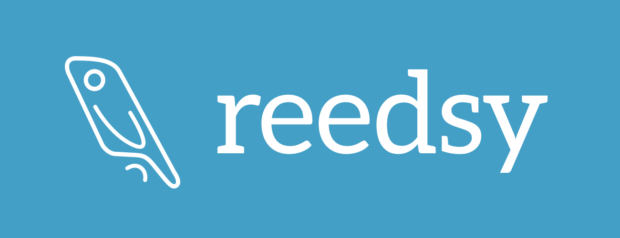
📆 Service offered since: 2014
🌎 Geographic reach: Global
🖋️ Service(s): Editing, interior design, cover design, illustrations, and more
💰 Cost to authors: Varies by service; average costs here
🌟 ALLi service rating: Excellent (Partner)
👑 Best for: Giving your book a professional polish
A marketplace for freelance publishing professionals, Reedsy is where authors can connect with editors and designers with years of relevant experience in traditional publishing. Each of our 3,700 professionals sets their own rate, and you can get quotes from up to five of them at a time so that you can find the best fit for your needs and budget. Admittedly, many of our editors don't come for cheap — but that’s because they're committed to quality, human-driven workflows.
In addition to the marketplace, Reedsy has a free book formatting tool that allows any author to quickly create a professional-grade ebook and print book files.
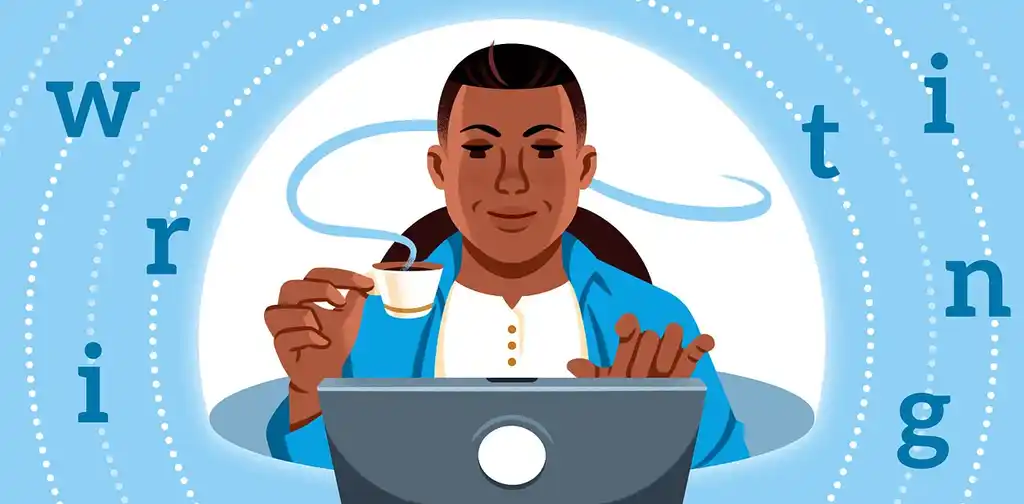
FREE FORMATTING APP
Reedsy Studio
Format your manuscript for print or EPUB with a single click.
|
Pros of Reedsy |
Cons of Reedsy |
|
➕ Format your book easily |
➖ Can be more expensive than sites like Upwork and Fiverr |
|
➕ Work with experienced, vetted editors and designers |
|
|
➕ Project and payment protection |
|
|
➕ Quick customer service |
Whichever self-publishing companies you choose, understand that it may take a bit of trial and error before you finally figure out your perfect self-publishing system. There's no single right way to go about it — but there are wrong ways, so remain vigilant!
